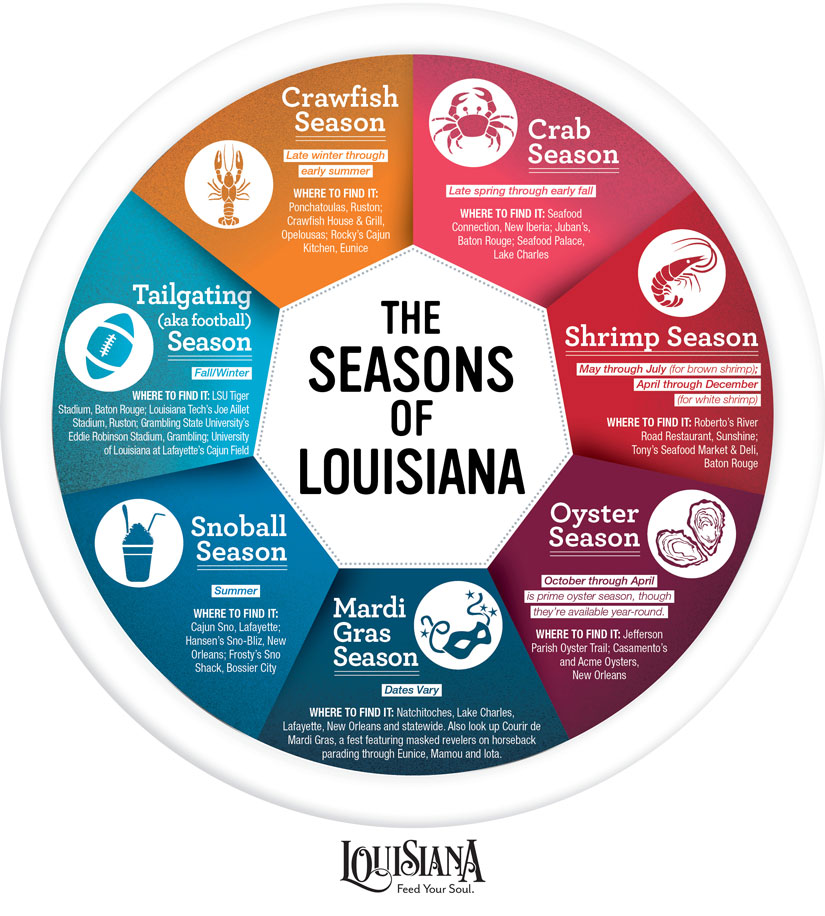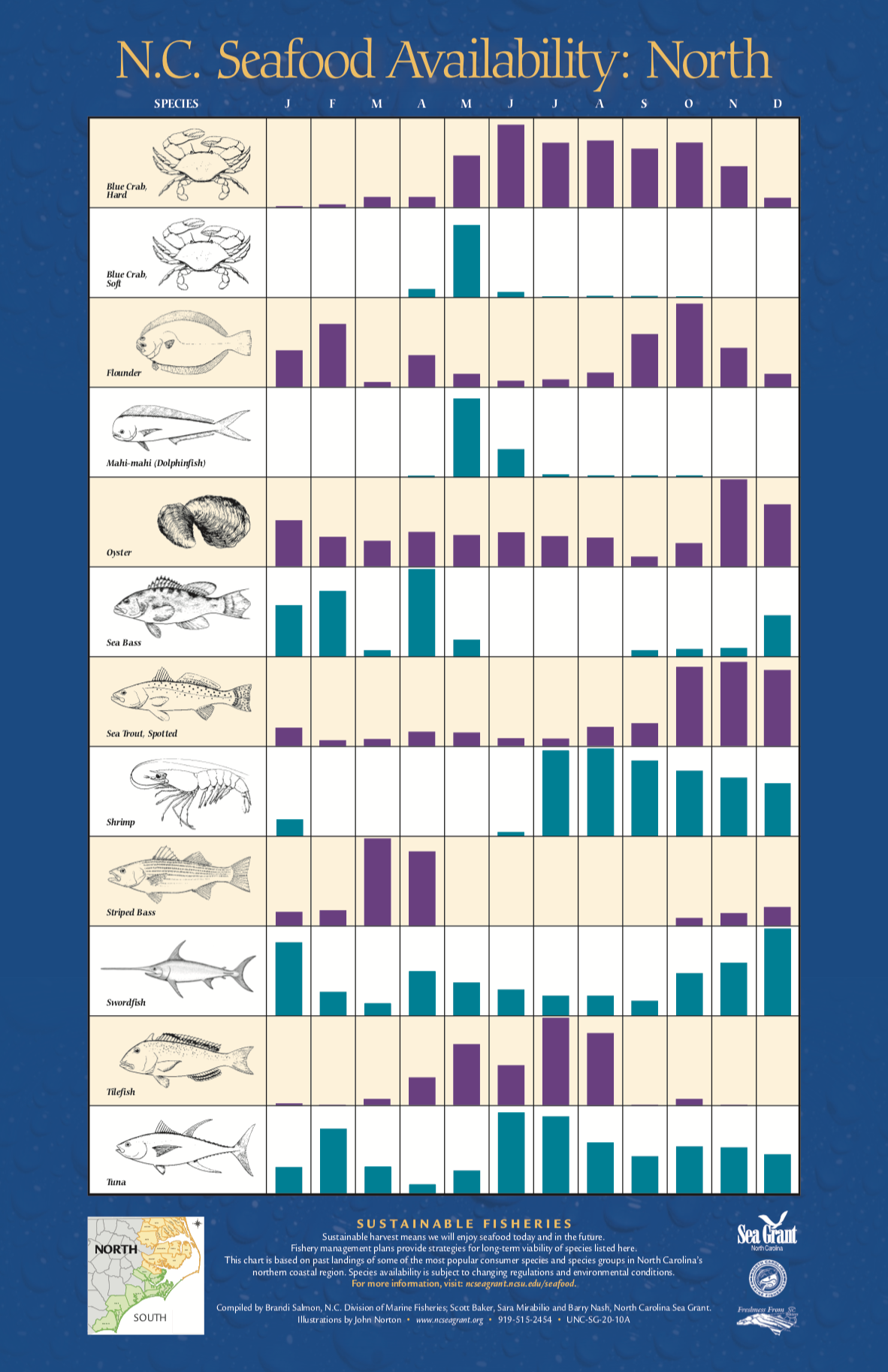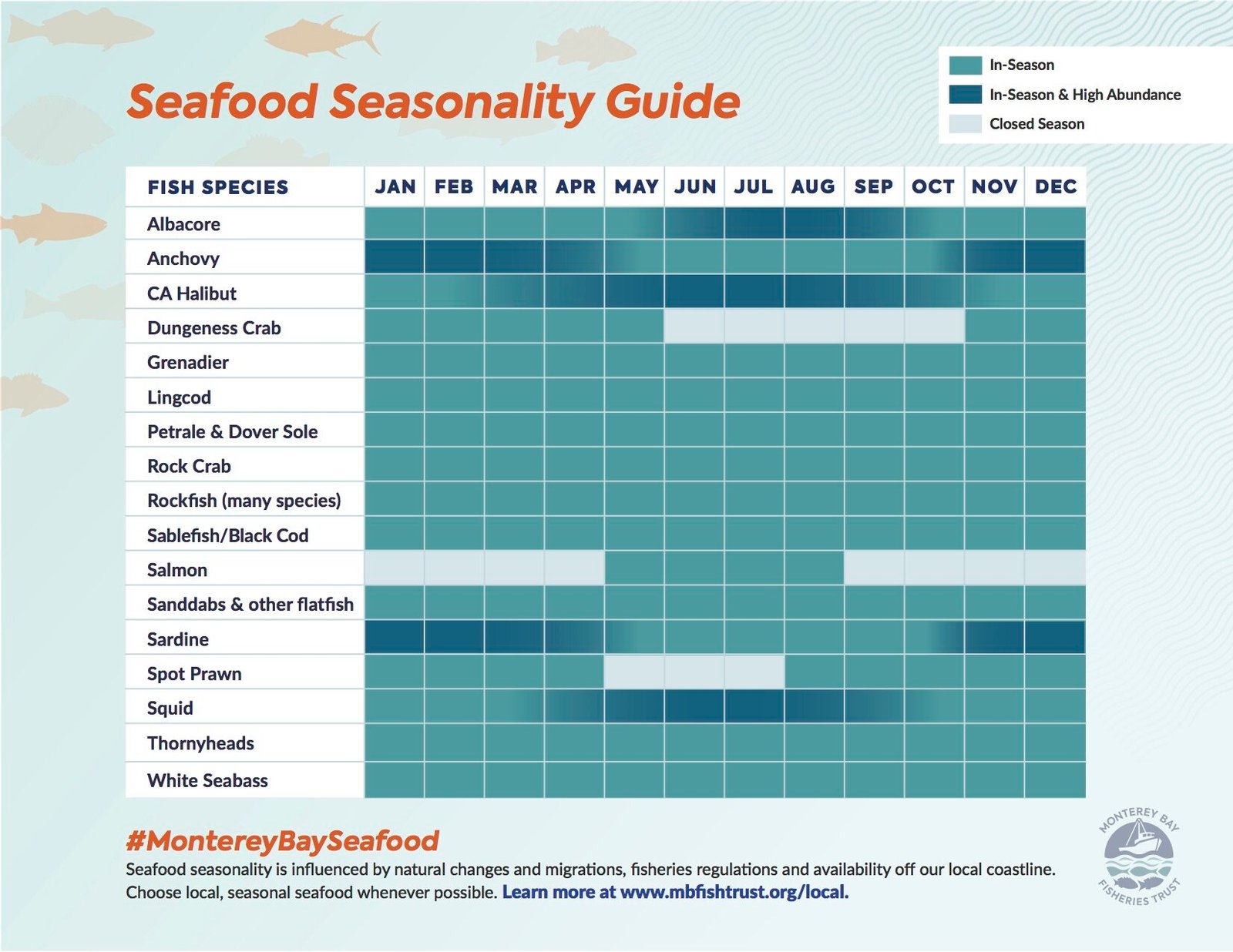Seafood season varies by species and location. Most types peak in taste and abundance during late summer and fall.
Seafood enthusiasts and culinary connoisseurs mark their calendars for peak seasons, when the freshest catches hit the markets. These optimal times hinge on breeding cycles and regional climates, providing a range of seafood options year-round. For example, Alaskan salmon season peaks from May through September, while Maine lobsters are best from June to December.
Local seafood guides offer a wealth of information, ensuring consumers get the best flavor and sustainability. Relying on this knowledge not only supports the ecosystem but also guarantees a sensory delight with every meal. Embrace the natural ebb and flow of ocean offerings, and you’ll enjoy seafood at its finest.
The Rhythms Of The Sea
The sea dances to a timeless tune, its waves in sync with the bounty below. Here, the natural rhythm dictates when seafood is at its prime, offering flavors and freshness unique to each season. This ebb and flow is the pulse of the ocean, guiding seafood enthusiasts to the ideal times for the best catch.
Natural Seafood Cycles
Oceans team with life that follows a set cycle. Sea creatures spawn, grow, and migrate according to it. Recognizing these patterns unveils the peak times for seafood harvesting. For instance, salmon make their famous upstream journeys in late summer. During spring, shellfish like clams and oysters are best avoided as they spawn. The understanding of these natural cycles ensures not only the finest taste but also sustainable practice.
Impact Of Climate On Marine Life
Climate plays a decisive role in the state of marine habitats. Warmer waters can lead to changes in fish migration patterns. They also impact breeding times and growth rates. Alert to these shifts, fisheries adapt to maintain balance and ensure supply. For example, lobster seasons might shift earlier or later, matching the crustaceans’ adjusted life cycle. Keeping oceans healthy guarantees flourishing seafood seasons for years to come.

Credit: www.explorelouisiana.com
Regional Seafood Timetables
Seafood lovers revel in the joy of seasonal catches. Understanding regional seafood timetables can elevate the dining experience. It ensures the freshness and authenticity of every dish. From coast to coast, different waters offer their bounty at varying times throughout the year. This guide dives into seafood seasons across key areas.
Notable Seasons In Key Areas
Each region boasts its peak seafood seasons. These timings can influence flavor and availability. The Atlantic, the Gulf, and the Pacific all have their signature seafood calendars. For instance, Gulf shrimp shine brightest from April to October, while Pacific halibut reigns from March to November.
Case Studies: Maine Lobster
Maine lobster is synonymous with summer feasts. Peak season runs from June to December, when lobsters molt and their shells are softer. This makes them easier to crack open and indulge in. Holiday demand often leads to a spike in catches during late fall.
Case Studies: Alaskan Salmon
Alaskan salmon is a treat for seafood aficionados. Salmon seasons vary by species:
- King Salmon: Best from May to July.
- Sockeye Salmon: Prime in June and July.
- Coho Salmon: Peaks in August and September.
- Pink and Chum Salmon: Abundant in summer months.
Alaskan waters provide a sustainable harvest, revered for its superior quality. Timing your purchase with these seasons ensures the freshest salmon experience.
Sustainability And Seasonality
Sustainability and Seasonality play crucial roles in the world of seafood. Responsible consumption ensures the health of ocean ecosystems. It also respects the natural growth and spawning cycles of marine life.
Choosing Sustainable Options
Selecting sustainable seafood helps protect the oceans. Leverage local catch seasons to enjoy the freshest options. Avoid over-fished species by choosing those ranked as abundant.
- Engage with local fishmongers who can provide insights into the most sustainable catches.
- Look for seasonal guides that list the best time to buy different types of seafood.
- Choose species that mature quickly and are known to be resilient to fishing pressures.
The Role Of Seafood Certifications
Certifications offer reliable indicators of sustainability. These badges of honor mean seafood is sourced without harming the environment.
| Certification | Focus Area |
|---|---|
| Marine Stewardship Council (MSC) | Sustainable fishing practices |
| Aquaculture Stewardship Council (ASC) | Responsible aquaculture |
| BAP | Best Aquaculture Practices |
Check packaging for certification logos. They help you make informed choices. Choose certified seafood and contribute to a healthier ocean.

Credit: www.neworleans.com
Health Benefits And Peak Seasons
Seafood is a superfood, rich in vital nutrients like omega-3 fatty acids, protein, and vitamins. Knowing the peak seasons ensures you get the freshest catch with maximum health benefits. Freshness means flavor and nutrition are at their highest. Let’s dive into the benefits and best times to enjoy different types of seafood.
Nutritional Peaks For Various Seafood
Timing is everything when it comes to seafood. Just like fruits and vegetables, seafood has seasons. These seasons affect their nutritional value. For example, oysters are best in months with an ‘R’, like September. They’re loaded with zinc then. Salmon runs are in spring and summer. This is when they’re high in omega-3s. Understanding these peaks can boost your health.
| Seafood | Peak Season | Key Nutrient |
|---|---|---|
| Salmon | May – September | Omega-3s |
| Oysters | September – April | Zinc |
These examples show optimal times to eat your favorite seafood for the best health perks.
Planning Your Diet With Seafood Seasons
Seafood seasons can shape your diet for the better. Eating fish and shellfish during their peak seasons ensures freshness and more nutrients. To get the best from seafood, create a seasonal eating plan. Include a variety of species to meet your nutritional needs year-round.
- Winter: Time for shellfish like crabs and oysters.
- Spring: Ideal for wild salmon and halibut.
- Summer: Shrimp and lobsters are in season.
- Fall: Mussels and clams are at their best.
Vary your seafood intake with the seasons. This way, you will enjoy a range of flavors and nutrients. Remember to check local seafood guides for the freshest options available to you!
Economic And Cultural Impact
The allure of seafood season extends far beyond the dinner plate. For many coastal communities worldwide, it sparks not only economic gains but also cultural festivities. Seafood harvesting seasons drive local economies and anchor cultural traditions, making them an annual highlight for residents and visitors alike.
Seafood Seasons In Local Economies
Seafood seasons stimulate local job growth and income. Fishers, seafood processors, and markets eagerly await peak seasons. Restaurants also thrive, crafting menus around the freshest catch. The economic impact is profound, as thriving seafood trade can account for a significant portion of a region’s income. For instance, Alaskan crab seasons influence the prosperity of entire communities.
Communities often invest in sustainable practices to protect this vital season. Investing in seafood seasons ensures long-term economic stability. Adequate management and responsible harvesting equal a consistent, robust market.
Cultural Events Tied To Seafood Harvests
Seafood harvests birth festivals and yearly traditions in many cultures. For example, Maine’s lobster festival and Japan’s Kani Matsuri, a crab festival, draw tourists globally. These events celebrate the seafood and the fishermen’s hard work. They also serve as a stage for intercultural exchange and community bonding.
Festivals typically feature cooking competitions, parades, and music. They highlight regional identity and pride, becoming an essential part of the cultural tapestry. Local crafts and performances get a chance to shine, generating additional economic benefits.

Credit: ncseagrant.ncsu.edu
Frequently Asked Questions For When Is Seafood Season
When Does Seafood Season Typically Start?
The start of seafood season varies by type and region. Generally, it begins in spring and extends through early fall. For specific seafood like salmon or crab, seasons can differ. Consult local seafood guides for precise timings.
What Are Peak Seasons For Popular Seafood?
Peak seasons for popular seafood differ. Lobsters thrive in summer, oysters are best in months with ‘r’ – September to April. Salmon runs peak from May to September. Always check regional calendars for the best time to buy different seafood types.
How Does Seafood Seasonality Affect Quality?
Seafood seasonality greatly affects quality. During peak seasons, seafood is fresher, more flavorful, and often more nutritious. It’s typically harvested during prime life stages, ensuring optimal taste and texture. Off-season, seafood may be less fresh or frozen.
Can I Get Fresh Seafood Year-round?
Yes, but it depends on the type and source. Some seafood like shellfish is farm-raised and available fresh year-round. For wild-caught, it’s seasonal. Frozen seafood offers a year-round alternative without compromising much on quality.
Conclusion
Understanding seafood seasonality can enhance your dining experiences and support sustainability. Remember, the best time to enjoy fresh seafood varies by region and species. Dive into local guides or consult with fishermen for peak freshness. Embrace the ebb and flow of the ocean’s bounty for your next memorable meal.

